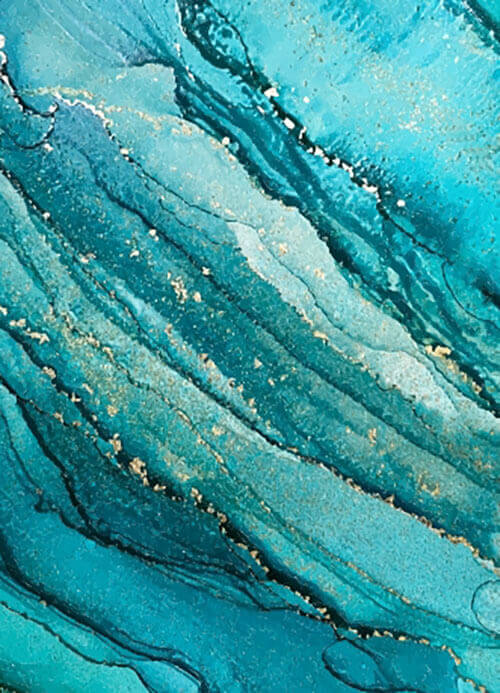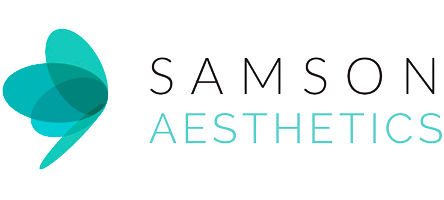Breast Implant Removal in Daytona Beach, FL

Dr. Samson offers breast implant removal, also known as an explant procedure, including “en bloc” removal of all implant material, and removal of breast capsules with muscle reattachment.
Allergan Breast Implant Recall
“Biocell” textured breast implants (manufactured by Allergan Inc.) were recalled worldwide in July 2019 because of an association discovered between the rough (textured) surface and a rare lymphoma (ALCL) that can occur in the capsule around the implant. The disease is very rare and usually can be cured with removal of the capsule; however, if left untreated it can be fatal. If you have these textured implants and have no symptoms, the FDA does not recommend they be removed (similar to the directive on polyurethane coated implants in the 1980s, which were not required to be explanted after being taken off the market). This is the least likely problem you will have with any breast implant, and I agree with this advice given the current scientific data. Also, this does not apply to any smooth surfaced implant, which represents 95% of the breast implants in use in the United States today. If you have any concerns, or any symptoms with regards to your breast implants, then we would recommend a consultation with a Board Certified plastic surgeon. If you would like to schedule a consultation with Dr. Samson, a Board Certified Plastic Surgeon, who has been performing Breast Implant Surgeries for over 20 years, please contact our office at 386-756-9400.
 Model
Model

Breast Implant Removal/En Bloc Capsulectomy
There are several reasons – some more urgent than others – as to why women undergo breast implant removal. These include: having an aesthetic desire for a change of size and shape, implant leakage or rupture, and capsular contracture. Some of the other potential problems that may have developed after the initial augmentation, creating the need for saline or silicone gel implant removal include: shifting, wrinkling, sagging, asymmetry, bleeding, and/or infection.
If you have breast implants and are considering removal, you have options and you do not have to live with implants that make you unhappy or uncomfortable. You may be concerned about how your breasts will look after the implants are removed. Dr. Samson is an experienced board certified plastic surgeon and will take extra steps to ensure a natural look and a safe removal. Call our office today to schedule your appointment!
Dr. Samson also performs breast implant revision procedures for women seeking a new look. There are varying reasons that women decide to get breast implants removed.
Why Get Breast Implants Removed
- Cosmesis: As trends change, some women are no longer pleased with the look of their breast implants and they seek removal for a return to their original look. Breast implants may need to be replaced over time, but some women opt for removal rather than revision or replacement.
- Comfort: Bodies and lifestyles change as we age. Natural breast tissue can grow larger in a way that changes the position of breast implants. Some women find that their day to day lives are drastically different than when they initially underwent breast augmentation and for varied reasons they wish to return to their natural breast size
- Capsular Contracture: Capsular contracture occurs when the body’s natural scar tissue becomes too tight or rigid around the implant. This condition is not harmful to your health, but it can cause pain and discomfort as well as hard or asymmetrical breasts that may appear unpleasing
- Rupture: Breast implant complications are rare, especially with the current advances in technology. However, implant rupture can occur, especially with older model implants. It is important that women have regular physical examinations to check for implant rupture.
- General Health Concerns: Extensive studies conducted in the past and currently taking place by the FDA and others, show that breast implants are safe. A growing number of women with breast implants believe that a disorder called breast implant illness may be causing them fatigue, joint pain, brain fog and other symptoms related to autoimmune disorders, and they are seeking breast implant removal surgery to help alleviate their symptoms. Although studies conducted by the FDA and others do not recognize breast implant illness, post breast implant approval studies should continue and possibly expand to explore the risk of genetic susceptibility to these symptoms. Dr. Samson is committed to women’s health and well being and performs en bloc breast implant explant surgery for women seeking to have their implants and the capsule surrounding those implants removed.
If you do not choose to have new implants inserted upon the removal of the initial implants, or further cosmetic surgery, it is important to note that your breasts will never look the same as they did before breast augmentation (especially if large implants are removed). Your breasts may appear smaller than before the implants, which could possibly be attributed to hormone changes or weight loss. Sagging, tissue atrophy, and chest wall deformity may also result from complete breast implant removal without an exchange. Some improvement in appearance will occur during the first six months after explant surgery. To get an idea of the results you can achieve with breast implant removal, view Dr. Samson’s Breast implant removal before and after photos.

4.9 rating on Google!
Highly rated, referred, and revisited
Our excellent patient satisfaction rate is one of the many things that keeps our patients returning and referring their friends and family to us.
 Model
Model

The Breast Implant Removal Surgery
During the consultation with Dr Samson will discuss with you the steps and details of your breast procedure with you. The surgical plan will be individualized to your specific needs and desires. The breast implant removal procedure will typically take place at our surgery center, Surgery Center of Volusia. If Dr. Samson determines that certain medical conditions necessitate that the procedure take place in a hospital, this will be discussed prior to scheduling your procedure.
Patients will usually be placed under general anesthesia. For the breast implant removal surgery, anesthesia may be either local or general anesthesia. The incisions made during this procedure are typically created in the scar from the patient’s initial augmentation surgery. Dr. Samson generally uses an inframammary incision to access the breast implant; however, other incisions may be used. The entire explant procedure typically takes between 1 and 3 hours.
Capsulectomy and “En Bloc” Removal
When breasts are augmented with implants, the body responds within weeks of the breast implant surgery by surrounding the implant pocket with scar tissue. This scar tissue is called the capsule and ideally it is a soft sheet of scar tissue that helps hold the implants in place. Removal of the breast capsule is called a capsulectomy. Whenever possible, Dr. Samson will perform the breast implant removal as an “en bloc” capsulectomy which means that the entire capsule is removed intact with the implant inside, as opposed to incising the capsule to remove the implant separately. In some cases the capsule may have become malformed, repositioned or adhered to the chest wall in a way that makes it impossible or unsafe to perform an “en bloc” removal. In those cases, any remaining capsule tissue will be cauterized, but whenever it is safe to do so Dr. Samson will remove the entire capsule.
Muscle Reattachment
One extra step that may be recommended for explant patients that have had their implants placed under the muscle is surgical reattachment of the pectoralis major muscles to the chest wall. After breast implants are removed, there is potential for animation deformity in which the detached muscle is visible through the skin. If so, Dr. Samson reattaches the muscle to minimize the risk of this deformity. Reattachment of the muscle may also improve blood flow for improved recovery and healthier breast tissue.

Breast Lift (Mastopexy)
It is normal to be concerned about how your body will look after implants are removed. There are a number of factors, including the size and condition of the implants, and how long they were in place, as well as the age and body type of the patient, that will determine the end result. Some patients inquire about breast lift surgery or fat grafting procedures in conjunction with the explant surgery. Dr. Samson believes that, in most cases, proper surgical technique during removal will result in a favorable aesthetic result without further surgical intervention. In cases with severe sagging or breast deformation after implant removal surgery, Dr. Samson may advise explant patients to wait approximately 6 months after their explant surgery to consider any additional procedures. The breast tissue will settle as it heals and blood flow improves and many patients are very happy with their appearance once they are fully healed. In some patients a breast lift may be appropriate at the time of explantation, and Dr. Samson will discuss this with you at the time of your consultation.
 Model
Model

Breast Implant Removal Recovery
In general, for the first few days after breast implant removal, there may be mild discomfort, swelling and bruising. There may be suction drains placed for a day or two. You should plan to devote the first week after surgery to complete rest and recovery. Patients may experience some discomfort, but pain medication will be prescribed. There will be restrictions on physical activity and strenuous exercise and manual labor should be avoided for 3-4 weeks.
A post-operative appointment with Dr. Samson will be scheduled on the day after surgery, 5-7 days after surgery and at 5 weeks after surgery. The entire recovery period usually stretches over a few months.
These appointments are important to assess your recovery; a follow up appointment 6 months after surgery will be scheduled.
Breast Implant Removal Cost
The cost of breast implant removal varies depending on the exact surgery planned, e.g. simple explantation, explantation with capsulectomy, “en bloc” removal, and mastopexy or fat grafting procedures will have varying costs. Also, anesthesia cost, cost of the surgical facility, and the cost of any medical tests and prescriptions you may need will vary. We have flat fee pricing for all breast implant removal procedures, including an all-inclusive “en bloc” removal with pathology for capsules, fungal/ bacterial cultures, Gram stain, and intraoperative implant photographs as well. Your Patient Coordinator can give you an accurate cost estimate for your specific needs during your one-on-one consultation.
Contact Us
We are available to answer any questions about breast implant removal.
If you are living with breast implants that cause you physical discomfort or emotional distress, please contact us to take the first step toward feeling comfortable in your body.
If you are interested in these or other cosmetic surgeries in the Daytona Beach, FL area, schedule a consultation by calling (386) 756-9400.

Questions for Dr. Samson
If you are interested in breast implant removal or any cosmetic surgery procedures in Daytona Beach, schedule a consultation with Dr. Samson today by calling (386) 756-9400 or fill out our contact form.
 Model
Model

BIA-ALCL (BREAST IMPLANT ASSOCIATED ANAPLASTIC LARGE CELL LYMPHOMA) – FAQS
Q: What is BIA-ALCL?
A:
BIA-ALCL (Breast Implant-Associated Anaplastic Large Cell Lymphoma) is a rare spectrum of disease that can range from an indolent accumulation of fluids around the breast (seroma) to a potentially metastatic lymphoma especially when there are delays in diagnosis. It is a disease that ranges from indolent to full-blown metastatic disease when not caught early. BIA-ALCL is not a cancer of the breast tissue itself. When diagnosed early, it is readily curable. If the disease is advanced, chemotherapy or radiation may be required.
BIA-ALCL is currently classified as a lymphoma. Many experts believe that it behaves clinically as a lymphoproliferative disorder (LPD) that encompasses the spectrum of disease from benign CD30+ seromas, to CD30+ malignant seromas, to invasive capsular disease, and finally metastatic disease. Current research is underway to further understand the proper classification of this disorder. Similar to other lymphomas, BIA-ALCL is a highly treatable disease with high cure rates.
Q: Have there been any deaths due to BIA-ALCL?
A:
There have been 17 confirmed deaths globally, (9 in the United States), attributed to BIA-ALCL since the disease was first reported nearly 20 years ago.
Q: What are the symptoms of BIA-ALCL?
A:
The first symptom of BIA-ALCL is usually a swelling of the breast between 2 to 28 years after the insertion of breast implants, with an average of about 8 years after implantation. The swelling is due to a collection of fluid surrounding the implant. This fluid can cause the breast to enlarge significantly over a period of days or weeks. It can also present as a lump in the breast or armpit, firmness of the breast, or pain. It is usually easily and completely treated if patients see their doctor at the first symptom.
Q: What is the risk of developing BIA-ALCL?
A:
The FDA reports that it is 1:3,817 to 1:30,000 in their latest statement. These risk assessments are changing on an ongoing basis, but this is the most accurate information currently available (February 2019).
Based on current data, the risk can be further explained by the texture grade of the implants as follows:
- Grade 1 (Smooth only) – In global databases, there has not been a confirmed case of smooth only. In the Feb 2019 FDA statement, it was reported that “there have been reports of BIA-ALCL in patients with smooth-surfaced implants and many reports do not include the surface texture of the implant at the time of diagnosis.” At the time of this publication it is known that a single case of smooth only BIA-ALCL was originally reported to the FDA; however, it was later determined that this was not accurate, and the case was a mixed implant case, and the report to the FDA was amended.
- Grade 2 (e.g. Microtexture, Siltex and similar) – 1:82,000
- Grade 3 (e.g. Macrotexture, Biocell and similar) – 1:3,200
- Grade 4 (e.g. Polyurethane) – 1:2,800
So, in conclusion as of February 2019 no cases of smooth have ever been definitively described.
Q: If a breast implant patient comes to see us when she develops a first symptom, will she be cured?
A:
That answer is not known and is a very important piece of information for patients and plastic surgeons. Most of the time patients see their plastic surgeon right away when they develop significant swelling of the breast. In these cases, the disease is almost always caught early and cured with a straightforward operation. Some women with advanced disease ignored earlier symptoms or saw a doctor who did not properly diagnose them. There are a few patients who presented with advanced disease who said that they never had earlier symptoms.
Q: Differences in implant texture and what role that factor plays in the research?
A:
Although it is rare, BIA-ALCL appears to currently develop exclusively in women with textured implants. To date there has not been a case of BIA-ALCL in a patient with only smooth implants. There are several theories which attempt to explain the higher rate for textured implant patients: many believe that the increased surface area of textured implants allows a higher number of bacteria around the implant, which forms a biofilm in some patients, and can result in chronic inflammation, ultimately leading to a proliferation of lymphocytes. Less accepted theories are that textured implants create greater inflammation because of chronic mechanical irritation, and another postulates that microscopic shedding of silicone from the textured wall induces inflammation.
Q: Is it a problem with Saline or Silicone implants?
A:
Of the 457 unique cases of BIA-ALCL (FDA 2-2019) implants are both silicone and saline. It appears to purely be related to the surface of the implant and not to what the implant is filled with.
Q: How does this impact those with breast implants?
A:
The plastic surgery societies ASAPS and ASERF emphasize that the most important issue for women with breast implants is to screen for breast cancer with self-exam, a regular physician exam, and mammography/ultrasound/MRI as recommended by their physician. Regardless of BIA-ALCL, all women should see their plastic surgeon immediately if they note a change to the size, feel, or shape of their breasts.
Q: What about those considering breast implants?
A:
Patients considering textured breast implants should discuss this issue with their plastic surgeon. As of this publication, there are no true contraindications of having textured implants. There are patients who are candidates for shaped textured implants. In them, science must precede fear.
Q: Do we recommend textured implants to a patient?
A:
The choice of implant type is ultimately a decision between an educated patient and her board certified plastic surgeon. There may be certain circumstances where a textured implant is recommended for particular patients.
All patients should have a detailed conversation with their surgeon about the risks associated with textured implants, beyond what is published online or in pamphlets. Ultimately, there are instances where textured implants are the best choice for them.
Q: How is BIA-ALCL diagnosed?
A:
If a woman develops swelling in an augmented breast, she should undergo an ultrasound scan. If fluid is detected, it should be drained and tested for:
- Cytology
- CD30
CD30 immunohistochemistry is not diagnostic for BIA-ALCL; however, it is a marker for activated T-Cells. If a patient’s seroma is CD30 positive, and the cytology is negative, this likely represents a precursor to BIA-ALCL, and should be treated with total capsulectomy.
If the seroma test is CD30 negative with negative cytology, then it should be treated as a benign seroma using the individual surgeon’s protocol.
The majority of seromas seen clinically are benign seromas and not BIA-ALCL.
Management of all seromas should be by a board-certified plastic surgeon. Mammograms are not useful in diagnosing BIA-ALCL. In confirmed cases PET or MRI/CT scans may be used to help stage the disease.
If a patient wants to have their textured implants removed and replaced, the options are:
- Exchange to smooth implants
- Exchange to smooth implants with a capsulectomy
Q: How is BIA-ALCL treated and what is the prognosis?
A:
Current recommendations for the treatment of BIA-ALCL call for bilateral capsulectomy (removing all the scar tissue) and removal of the old breast implants. This is a very common procedure performed by plastic surgeons, identical to what is done when an implant has ruptured, or capsular contracture has developed. Smooth implants can be put back in or the patient can choose not to have implants. In all early stage cases, the disease has been fully resolved by this surgery alone. The majority of patients require no additional treatment. However, if the disease has spread to lymph nodes or grown into the adjacent tissues, chemotherapy and radiation may be necessary. These are very serious treatments with significant side effects.
Q: Are some patients at greater risk than others?
A:
The rates of BIA-ALCL seem different throughout the world. This may be due to different reporting and registries, but there may be a genetic predisposition that is not yet fully understood. For instance, as of this time there are very few cases in Asian patients. The risk is only with textured implants and not smooth implants; the rate is no different between silicone and saline; it occurs in both cosmetic and reconstructive patients. There is no test to determine whether one textured implant patient is at any more risk of developing this disorder than any other patients.
Q: Should patients have their implants removed because of BIA-ALCL?
A:
For textured implant patients, neither the FDA nor any plastic surgery society currently recommends that women should preventatively remove textured breast implants to prevent BIA-ALCL. However, there are women who have been concerned enough about BIA-ALCL and have chosen to have their implants removed. There are some women who were already considering a breast implant revision, and the BIA-ALCL issue gave them one more reason to decide to proceed.
Breast implant patients should have ongoing follow up.
Current FDA recommendations and ASAPS recommendations indicate that patients with textured implants with no issues should not do anything and implant removal is not recommended.
Q: Should women with breast implants be screened for BIA-ALCL?
A:
There is no blood test to specifically screen for BIA-ALCL. The expert opinion is that asymptomatic women without breast changes do not require more than routine mammograms and breast exams. But if a patient experiences a change in her breasts – especially if there is swelling or a lump – she should undergo immediate examination, imaging, and consultation with a plastic surgeon. If there is fluid around the implant the fluid should be aspirated under ultrasound guidance and sent for analysis.
Q: What causes BIA-ALCL?
A:
Major plastic surgery societies and research wings such as ASAPS, ASERF, and the FDA, along with the implant manufacturers are intensely studying BIA-ALCL. To date, no specific causal factors have been identified. Implant texturing, bacteriologic contamination, and genetic factors have been implicated and are undergoing further study.
The best theory today is that a combination of four factors are required for the development of BIA-ALCL:
- Textured implants (surface area to sequester bacteria)
- Chronic bacterial-inflammation
- Genetic predisposition
- Time
The source of the chronic inflammation is thought to be bacteria that have been identified around the implants in affected breasts. Evidence is accumulating that a long-term inflammatory response to the presence of these bacteria is one of the factors that may cause BIA-ALCL. Research is ongoing and cases are being monitored.
Genetic factors may play a role. Some geographic areas have reported very few cases. Ongoing data collection worldwide will help to determine whether or not there are any genetic propensities for this disease.
Q: Do we recommend against the use of textured implants?
A:
The available data does not support discontinuance of textured implants. The best practice is always for the physician to discuss with each patient the known risks and potential complications associated with any procedure. It is important for the patient and her doctor to frankly discuss all options available, and the risks involved.
Every plastic surgeon offers patients options regarding breast implants in terms of sizing, shape, and surface. Depending on a particular patient’s needs, a textured implant may be preferable. The plastic surgeon must provide a frank and transparent discussion regarding the benefits and risks of implants, both smooth and textured. The patient must then make an informed decision, based upon her own assessment of her needs and the risks involved.
Every plastic surgeon needs to help each individual patient make her own decision about which implant she prefers in a fully transparent manner. This involves weighing any possible increased risks against the advantages offered by a particular type of implant. It is critical that the patient makes a fully informed decision following a full discussion of the risks and benefits.
Q: What is the recommended clinical response to a patient presenting with symptoms that could be attributable to ALCL?
A:
Detailed information can be found on the ASAPS website at: http://www.surgery.org/professionals
Q: Where can I find more information on BIA-ALCL?
A:
Additional information and resources on BIA-ALCL are available online at https://www.surgery.org/media/resources
Q: What research is being conducted?
A:
ASERF is currently funding two BIA-ALCL studies on the Pathogenesis of BIA-ALCL and Genomic Profiling to Understand the Pathogenesis of BIA-ALCL.
ASERF is sponsoring leading, cutting edge research on BIA-ALCL to better define the disease and improve diagnosis and outcome. More information can be found on the ASERF website: www.aserf.org


